Premier Surfing Beaches in Costa Rica: A Guide
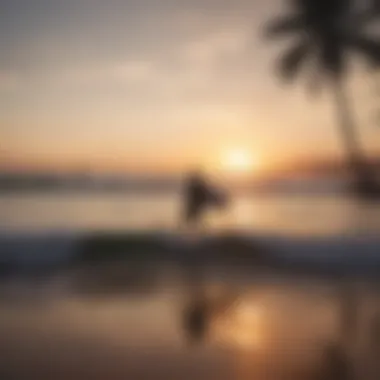

Intro
Costa Rica is often cited as one of the most cherished locations for surfers around the globe. Its coastline stretches across both the Pacific and Caribbean, offering surfers an extensive variety of wave conditions. Whether one is searching for mellow swells perfect for beginners or challenging barrels suited for the more experienced, there’s something for every level of surfer here.
The lush landscapes, vibrant wildlife, and commitment to eco-friendly practices further elevate its charm. Surfing isn’t just about catching waves; it embodies a way of life ingrained with respect for nature. As we dive into this exploration, this article aims to provide a detailed guide on the premier surfing beaches, ensuring surfers grasp not only the technical aspects of the sport but also the ethos behind the surf culture in Costa Rica.
Let’s start our journey to understanding the diverse techniques that come with surfing in this enchanting land.
Surfboarding Techniques
Surfing isn't merely a sport; it's an art form with its own set of techniques that can elevate one from a novice to an expert. Knowing how to maneuver through the waves is key, especially in varying conditions found along Costa Rica’s coast. Below are insights for both beginners as well as seasoned surfers.
Beginner Tips for Mastering the Basics
For those just starting out, the essential goal is to establish a strong foundation. Here are some tips to help beginners get their footing:
- Choose the Right Board: A longer, wider board is typically more stable and easier to balance on.
- Practice Paddling: Spend time getting comfortable with paddling. It’s crucial for catching waves effectively.
- Learn About Wave Etiquette: Understanding surfing etiquette can help mitigate conflicts in crowded waters. Respecting the right of way and not dropping in on others can go a long way.
- Focus on Balance: When standing up, keep your knees bent, and your weight evenly distributed. This will enhance your control over the board.
- Have Patience: Learning to surf takes time; don’t rush. Each wipeout is a lesson in itself.
Advanced Techniques for Seasoned Surfers
For more experienced surfers looking to elevate their game, mastering advanced techniques is key:
- Bottom Turns: This move sets you up for your next maneuver. Focus on generating speed and power through your turns.
- Cutbacks: A sophisticated technique that allows you to angle back towards the breaking wave, maintaining your momentum.
- Snaps: Quick, sharp turns off the lip of the wave. Execution relies heavily on timing and precision.
- Aerials: Takeoff from the lip and catch some air, a flashy move that showcases skill and style, though it demands rigorous practice.
- Read the Ocean: Understanding how waves break and predict their behavior is essential in honing surf skills. Always keep an eye on wind patterns and tide charts.
Closure
"Surfing is not just a sport; it's a way of life that teaches respect for nature and self."
Take your knowledge a step further by exploring the surfboard equipment that can accentuate your performance on these stunning beaches.
Prolusion to Surfing in Costa Rica
Surfing in Costa Rica is more than a leisurely sport; it's a way of life for many locals and travelers alike. The country boasts some of the best and most diverse surf spots in the world. From beginner-friendly beaches to challenging breaks for seasoned surfers, there's something for everyone to ride the wave.
The essence of surfing here intertwines with the rich culture and vibrant ecosystems, making it a significant attraction. Costa Rica's surf scene thrives not only on the quality of its waves but also on the community spirit it fosters. Surfers, tourists, and locals often gather on the beach, exchanging tips, experiences, and laughter, creating a harmonious environment that enhances the joy of the sport.
Historical Context of Surfing
Surfing in Costa Rica began to gain traction in the late 20th century. Initially, it was not as popular as a recreational activity but evolved swiftly as both locals and international visitors recognized the untapped potential of the country's coastlines. With its fair share of legends, such as the introduction of surfing by travelers from California or Hawaii, the sport has since integrated itself into the local culture.
The 1980s and 1990s saw an explosion in the number of surfers flocking to the shores of Costa Rica, largely due to the promotion of surf tourism. The picturesque waves, coupled with the laid-back vibe characteristic of Costa Rican life, drew numerous enthusiasts from all around the globe. Now, surf competitions are commonplace, and local surfers often compete at the international level.
Unique Geographical Factors
What sets Costa Rica apart as a surfing mecca are its unique geographical features. The country is positioned between the Pacific Ocean and the Caribbean Sea, allowing for a variety of surfing environments. The surf spots vary wildly; the Pacific coast is known for its powerful waves, while the Caribbean coast offers more mellow swells, catering to different skill levels.
- Coastal Diversity: Costa Rica's coast features beaches that can suit any skill level. There are spots where long gentle waves roll in, ideally suited for beginners, while others present complex reef breaks for seasoned surfers.
- Year-Round Surfing: Thanks to its geographic location, Costa Rica enjoys year-round surf conditions. Surfers can experience consistent waves regardless of the season, offering ample opportunity to hit the water.
- Biodiversity: The stunning natural environment also contributes to the experience. Surfers are not only greeted by beautiful beaches but also by lush rainforests and incredible wildlife, adding layers to the surfing experience.
Quote: > "Costa Rica offers surfers a blend of exhilarating waves and breathtaking landscapes, making each surfing session unforgettable."
These factors combined create an enticing environment for surfers. Each session not only presents an opportunity to conquer new waves but also to appreciate the remarkable biodiversity that Costa Rica is famous for.
The Varied Coastlines of Costa Rica
Costa Rica's distinct and diverse coastlines play a critical role in shaping the surfing experience. The interplay between the geographic features, wind patterns, and tidal conditions all contribute to the unique wave characteristics found along the country's shores. Surfers in Costa Rica can expect to encounter waves for every skill level, making it a prime destination for both amateurs and seasoned surfers alike.
The Pacific and Caribbean coasts, each offering their own surf conditions, are tied deeply to the culture and lifestyle of the local communities. They not only provide thrilling adventures but also play an important role in conservation efforts. Understanding the characteristics of these coastlines is fundamental for any surfer aiming to explore the diverse surfing spots the country has to offer.
Pacific Coast: Characteristics and Waves
The Pacific Coast is known for its mostly consistent and powerful waves, making it a paradise for surfers. With stretches of sandy beaches and rocky points, the variety ensures surfers can find a wave that suits their style. The region tends to attract swell from various sources, leading to different types of waves depending on the strategic waves of the wind and ocean currents.
- Surf Conditions: Some popular surf spots here include Tamarindo, which offers mellow waves for beginners, while Playa Hermosa is well known for more advanced surfers seeking powerful rides. Waves here can range from 2 to over 10 feet in height, depending on the season.
- Climate Influence: The dry season from December to April typically sees the best conditions, with offshore winds providing clean and well-formed waves. The wet season provides some fun smaller waves, ideal for practicing maneuvers without heavy crowds.
This coast has a wide variety of surf schools and rental shops that cater to all levels. Beginners can easily find lessons, while experienced surfers can rent equipment at many spots.
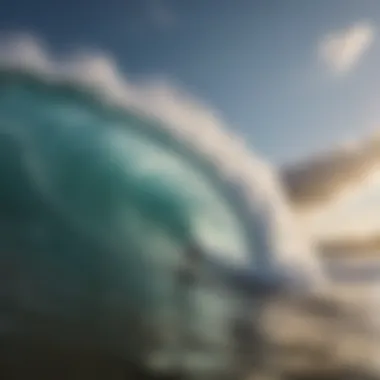
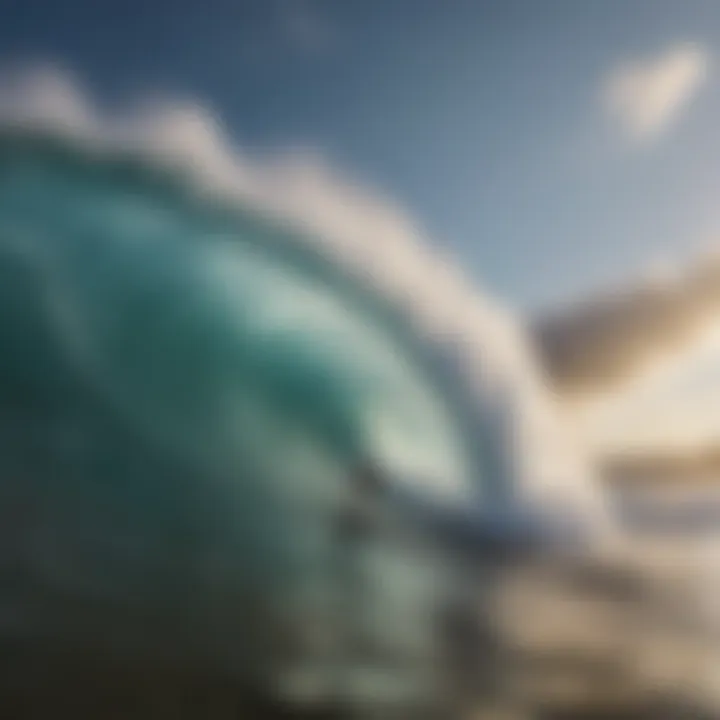
Caribbean Coast: Conditions and Culture
The Caribbean Coast, in contrast, offers a different vibe and surf culture. Its more laid-back atmosphere is complemented by vibrant local traditions heavily influenced by Afro-Caribbean culture. This coastline is characterized by clear waters and a tropical climate, but the surf can be more unpredictable.
- Wave Diversity: Here, the best surfing often comes from the swells generated by distant storms. Places like Puerto Viejo offer waves that vary sharply, providing opportunities for surfers to experience fun and challenging conditions. Visitors can find both left and right-hand breaks, accommodating all types of surfers.
- Cultural Richness: The area boasts a local culture enriched by music, food, and traditions that are intertwined with the surf lifestyle. Surf competitions and festivals often celebrate this heritage, offering a unique setting for surfers who wish to immerse themselves in more than just the waves.
The Caribbean Coast is less commercialized than its Pacific counterpart, making it an attractive option for those looking to enjoy a less-intrusive surf experience, where one can connect with nature and local culture more intimately.
Tamarindo: The Surfing Capital
Tamarindo, located on the Pacific coast of Costa Rica, is renowned as a surfing hotspot, attracting surf enthusiasts from every corner of the globe. The local culture is deeply intertwined with the ocean, and the town has blossomed into a vibrant hub for surfing adventures. It’s not just the size of the waves that draws people; rather, it's the entire atmosphere that makes Tamarindo the surfing capital. Here, surfers can mingle, learn, and share experiences within a community that thrives on wave riding.
One of the unique aspects of Tamarindo lies in its accessibility. The surfing conditions are accommodating for beginners yet challenging enough for seasoned surfers. The diverse wave characteristics contribute to Tamarindo's fame. The town is rife with opportunities, making it an ideal base for exploring different beaches along the coastline.
Wave Conditions and Best Surfing Seasons
Wave conditions in Tamarindo are influenced by the region's geography and seasonal shifts. Generally, the best time to catch sizeable waves is during the rainy season, which runs from May to November. During this period, surfers can expect consistent swells, with offshore winds creating creamy, clean faces that ignite excitement among those chasing the thrill of riding.
- When the tides are just right, Tamarindo offers:
- Powerful beach breaks ideal for intermediate and advanced surfers.
- Gentler waves perfect for beginners learning the ropes, especially near the river mouth.
On the other hand, the dry season, stretching from December to April, presents smaller, more manageable waves, making this time excellent for novice surfers to hone their skills. Though the swells may not be as intense, the captivating sunsets and idyllic atmosphere still draw many to the shores.
Local Surf Schools and Rentals
The presence of numerous surf schools and rental shops in Tamarindo makes it a haven for those wanting to learn or improve their skills. Local instructors, often seasoned surfers themselves, are adept at sharing knowledge, providing personalized tips, and catering to various levels of expertise. These schools often incorporate an eco-friendly ethos, aligning with Costa Rica’s commitment to sustainability, which is an added bonus for environmentally-conscious travelers.
- Some popular surf schools in Tamarindo include:
- Waves Costa Rica: Offers tailored packages for different skill levels.
- Tamarindo Surf School: Renowned for its friendly instructors and supportive environment.
For those not keen on lessons, surfboard rentals are available at affordable prices. A range of boards, from soft-tops for beginners to hard-tops for more experienced surfers, can be found along the beach.
As you step into the vibrant waters of Tamarindo, it’s clear that every wave ridden is a thread woven into the town’s rich tapestry of surfing culture. Amid the laughter and camaraderie, one can sense the importance of sustainability and respect for the ocean that this surfing capital upholds.
Playa Hermosa: A Surfing Paradise
Playa Hermosa stands as a beacon for surf enthusiasts looking for a thrilling experience. Located along Costa Rica’s alluring Pacific coast, this beach isn’t just a dot on a map; it’s an epicenter of surfing culture, attracting both seasoned professionals and eager novices alike. Known for its consistent waves and breathtaking backdrop, it offers a unique blend of opportunities for every surfer.
This enchanting beach has become a hub where the surf meets the serenity of nature. With its ideal conditions shaped by the coastline’s contours and surf breaks, Playa Hermosa is more than just another surfing destination—it's a true paradise. Whether you are hunting for challenging waves or simply want to bask in the stunning scenery, there’s something special about Playa Hermosa that keeps surfers returning year after year.
Challenges for Advanced Surfers
For the more skilled riders, Playa Hermosa can serve a mixed bag of challenges. The swells here can reach impressive heights, particularly during the rainy season from May to November. While this is thrilling for experienced surfers, it does present an added layer of complexity. The waves often break hard and steep near the shore, making for a rush that requires precise timing and skill. Many surfers have had their share of wipeouts while tackling the sometimes unforgiving surf, which adds an element of danger that experienced surfers must acknowledge.
"It’s not just about riding waves here; it’s about knowing how to dance with the ocean’s moods. Nothing worth doing is easy, right?"
Surfing here demands a keen awareness of shifting tides and wind conditions, as they can affect the quality and safety of the waves dramatically. To ride the sweetest swells, surfers often need to navigate beyond the initial break, where more favorable conditions might lurk and call for audacity and expertise.
Nearby Amenities and Community
Aside from exhilarating waves, Playa Hermosa offers a vibrant community buzzing with life. After a long day of surfing, relaxing in the cozy local eateries and surf shops is the norm. Many establishments are known for their freshly caught seafood—think grilled fish tacos and server-sized portions that’ll fuel you for the next session. The local community comprises welcoming faces, often sharing their passion for the ocean and a commitment to preserving its beauty.
Moreover, for those seeking some downtime or a change of pace, there are several amenities ranging from surf rentals to spa services. You can grab a board from a local surf shop, join a yoga class overlooking the crashing waves, or indulge in a refreshing smoothie from a nearby café. If you're in need of guidance, local surf schools provide excellent instruction from seasoned pros, ensuring you can get the most out of your adventure.
In essence, Playa Hermosa isn’t just a spot to catch waves; it’s a symphony of community, adventure, and breathtaking natural beauty that makes it a surfing paradise. Each visit unfurls countless stories and unforgettable experiences, creating a bond between surfers and the ocean that is hard to shake.
Puerto Viejo: The Caribbean Experience
Puerto Viejo is a vibrant gem on Costa Rica's Caribbean coast, known for its electric surf culture and unique charm. This destination stands out not just for its waves, but also for the lively atmosphere and the colorful blend of cultures. The appeal of Puerto Viejo is manifold; it caters to surfers of all levels and delivers an immersive experience that transcends the act of riding the waves.
Surf Variability and Cultural Influences
The surf conditions in Puerto Viejo are influenced by a myriad of factors, including tides, winds, and the ever-changing swell patterns of the Caribbean Sea. One notable surf spot is Salsa Brava, famous for its powerful waves. This reef break can deliver double overhead waves during the peak season, offering both an adrenaline rush and a serious challenge for skilled surfers. However, there are other breaks like Playa Cocles, which cater to less experienced surfers and promote a more relaxed atmosphere.


Culturally, Puerto Viejo reflects a history of Afro-Caribbean heritage. This is evident in the local food scene, music, and even the surf vibe. It’s not uncommon to hear calypso and reggae music wafting through the air as you walk down the beach. Many surf schools in the area embrace this culture, often integrating local rhythms into lessons, allowing surfers to connect with the environment in a lively and engaging way. It’s this seamless incorporation of cultural elements that enriches the overall surfing experience in Puerto Viejo.
*"The waves here are not just water and foam; they carry stories and rhythms that resonate with every ride."
- Local surf instructor*
Environmental Considerations
Surfing in Puerto Viejo also comes with a set of environmental responsibilities. The region is rich in biodiversity, home to several protected areas like the Gandoca-Manzanillo Wildlife Refuge, which is vital for preserving the local ecosystem. Surfers and visitors are encouraged to respect these natural habitats and minimize their impact while enjoying the coast.
To promote sustainability, local initiatives focus on geolocation effort to combat pollution and protect the intricate coral reefs nearby. Surfing schools often advocate for "leave no trace" principles, stressing the importance of cleaning after their sessions and steering clear of overcrowded areas that risk damaging fragile ecosystems.
Surfers here are encouraged to support eco-friendly surf gear that aligns with the commitments to environmental sustainability. For instance, purchasing surfboard wax made from natural ingredients or opting for boards crafted from sustainable materials can be small yet impactful steps.
In summary, the surfing culture in Puerto Viejo is distinctive, characterized not only by its variable surf conditions but also by a rich tapestry of cultural influences. With a growing focus on environmental considerations, it epitomizes the delicate balance between enjoying nature’s gifts and preserving them for future generations.
Environmental Sustainability in Surfing
In an era where natural resources are under constant strain, the concept of environmental sustainability is becoming increasingly vital. For surfers, this means understanding how their beloved sport intersects with the health of marine ecosystems and coastal environments. Costa Rica, known for its stunning coastlines and vibrant surf culture, also faces challenges that require awareness and action. Incorporating sustainable practices into the surf experience not only benefits the waves and beaches surfers cherish but also strengthens local communities and preserves the mesmerizing nature that captivates visitors.
Conservation Efforts Along the Coast
Conservation efforts in Costa Rica are essential for preserving the remarkable biodiversity found along the coastlines. Various organizations, both local and international, have been actively involved in safeguarding vulnerable ecosystems. In places like the Marino Las Baulas National Park, efforts focus on protecting nesting grounds for endangered sea turtles. Surfers play a crucial role in these initiatives, as their presence can help monitor and promote awareness about the importance of these habitats.
Surfers are encouraged to participate in beach clean-ups, often organized by local surf schools and communities. Cleaning up litter not only benefits the environmental but also ensures that surfers can enjoy clean waves and sandy beaches. Additionally, community campaigns to educate about single-use plastic and its consequences are gaining traction. These programs aim to reduce waste by advocating for reusable options, giving a helping hand to both the ocean and surf culture.
Here are a few notable conservation practices:
- Community Engagement: Local communities often rally around initiatives such as adopting stretches of beach to maintain cleanliness. These activities foster a sense of ownership among surfers and locals alike.
- Education: Workshops and information sessions inform both surfers and tourists about ecological impacts, creating a shared responsibility for the environment.
- Research Projects: Collaborations between surfers and environmental scientists often lead to valuable data collection on wave conditions, erosion, and sustainability practices.
"Preserving the coast for future generations allows surfing to remain not just a sport but a lifestyle intimately connected to nature."
Eco-Friendly Surf Equipment
When it comes to surf gear, making sustainable choices is a growing trend among surfers. Eco-friendly surf equipment includes a range of products that are designed to minimize environmental impact without sacrificing performance.
Surfboards crafted from bio-resins or recycled materials are becoming more common, and many manufacturers are aiming for sustainable production processes. Brands like Firewire Surfboards are paving the way with boards made from renewable resources, demonstrating that performance and environmental consideration can go hand in hand.
Other aspects include:
- Organic Wetsuits: The rise of wetsuits made from natural rubber is notable. These products are less harmful to the marine environment during production and offer durable alternatives to traditional neoprene.
- Sustainable Accessories: Many brands now offer accessories like leashes and traction pads made from recycled plastics, reducing reliance on virgin materials.
- Eco-Conscious Apparel: Beyond equipment, choosing surf clothing made from organic or recycled materials supports the sustainability movement. Local artisans often create unique designs that reflect both surfing culture and environmental stewardship.
As surfers increasingly opt for greener solutions, the industry is responding positively. Whether it's providing more eco-friendly options or implementing sustainable practices, the shift toward an environmentally responsible surfing culture is definitely gaining momentum. Engaging with these sustainable practices not only enhances the surfing experience but also instills a sense of responsibility towards protecting the beautiful coastlines of Costa Rica.
Safety and Awareness in Surfing
Surfing isn’t just about catching waves; it’s also about understanding and respecting the ocean. The notion of safety and awareness in surfing transcends simple precautions—it encapsulates knowledge of the environment, the right gear, and how to navigate challenges on the water. For both novice and seasoned surfers, this section aims to shed light on why being attuned to local conditions and adhering to safety protocols can make or break your surfing experience.
"The ocean is a capricious mistress; respect her, and she may reward you with unforgettable rides, but disregard her, and the consequences can be dire."
Understanding Local Conditions
Local conditions can vary widely from one beach to another, and recognizing these differences is crucial for a safe surfing adventure. Wave patterns, tides, and wind conditions can change drastically depending on the time of day or the season.
For instance, consider Tamarindo, where the waves can swell substantially during the rainy season. Here, surfers need to be aware of stronger currents and shifting tides. In contrast, up the coast at Playa Hermosa, the consistent beach breaks welcome surfers at almost any skill level, but local expertise is essential to dodge hazards like rocks and rip currents.
- Current conditions: Always check the local surf report. Websites and apps offer real-time data on wave heights, wind speeds, and tide charts.
- Wildlife: Be mindful of the marine life in the area. Certain beaches can have jellyfish or sea urchins, which can present risks.
Gearing up with knowledge of local conditions not only ensures safety, it also enhances the overall surfing experience. Learn the beach's unique elements, speak to local surfers, and observe the ocean behavior before diving in.
Basic Surf Safety Tips
While surfing can be exhilarating, it comes with inherent risks. Here are several practical tips that can keep you afloat—both literally and figuratively:
- Know Your Limits: It’s important to surf within your capabilities. If the waves look daunting, perhaps it’s better to observe or practice your skills in calmer waters.
- Surf with a Buddy: Never hit the waves alone. Surfing with a friend not only makes the experience more enjoyable, but also ensures someone is around in case of an emergency.
- Stay Close to the Shore: If you are a beginner, stay within a comfortable distance from the beach. This way, you can paddle back easily if caught in challenging conditions.
- Wear Proper Gear: Make sure to wear a suitable wetsuit if the water is cold, and always use a leash to keep your board within reach.
- Respect Other Surfers: Maintain good etiquette in the water. This means not cutting off others and waiting your turn—there’s enough wave action for everyone!
- Always Be Aware of Your Surroundings: Keep an eye out for other surfers, swimmers, and potential hazards like rocks or debris in the water.
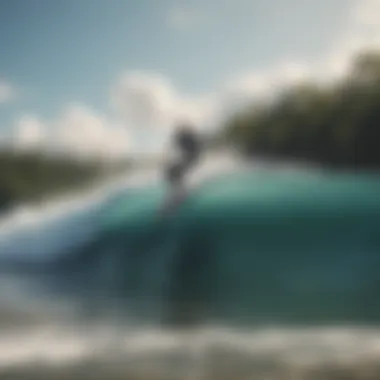
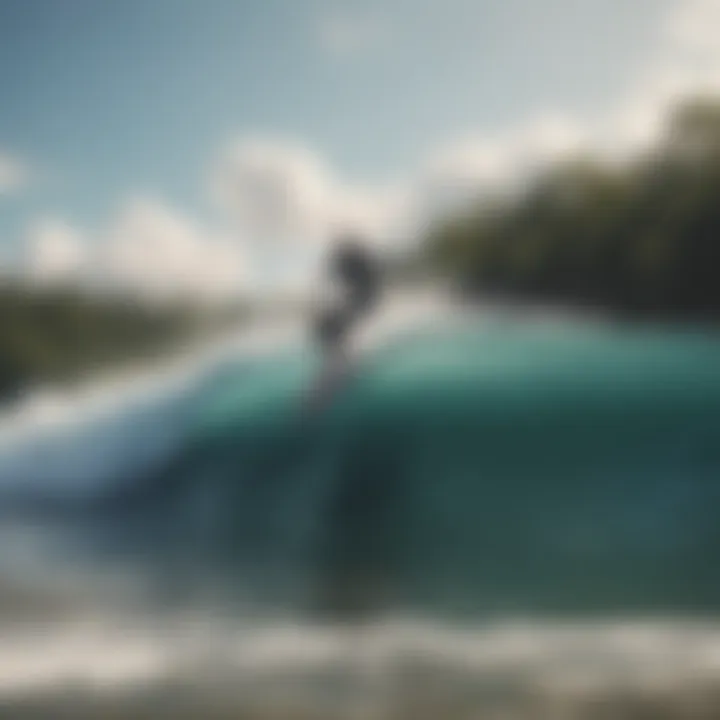
By adhering to these guidelines, surfers can greatly minimize risks. Safety doesn’t kill the vibe; it actually enhances the thrill of riding those beautiful waves!
Next time you’re planning a surfing expedition in Costa Rica, remember that the ocean may be your playground, but understanding how to navigate it safely is paramount.
Cultural Significance of Surfing in Costa Rica
Surfing in Costa Rica goes beyond just catching waves; it’s interwoven with the nation's identity and community spirit. The cultural significance of this sport goes back decades, creating a tapestry of connection, passion, and lifestyle that reflects the vibrancy of Costa Rican society. From the energetic youth who embody the surf culture to the seasoned veterans who share their wisdom, surfing is a communal activity that helps to foster unity and pride.
The Role of Surfing in Local Communities
In many coastal towns, surfing acts as a lifeline. It attracts tourism, which can positively impact local economies. For instance, towns like Tamarindo and Puerto Viejo have evolved around surfing; surf shops, schools, and restaurants cater to visitors and locals alike. The commitment to surfing isn’t merely economic; it's about building a community.
Local surfers often become ambassadors for their towns. They promote clean beaches and sustainable practices, advocating for respect towards the ocean and the environment. When locals gather for surf sessions, it's not only about the sport but also about sharing stories, traditions, and values that connect generations. Young surfers learn from their elders – a passing down of skills and respect for the waves.
Moreover, in some regions, surf culture nourishes a connection to Pura Vida, a phrase meaning "pure life" that embodies the Costa Rican ethos of enjoying life and being grateful. surfing encapsulates this sentiment perfectly, bringing joy and fostering a sense of appreciation for nature.
Surf Competitions and Events
Surf competitions in Costa Rica highlight the country’s prominent role in the global surfing scene. Events attract both local pros and international talent, generating excitement and camaraderie.
Take the Tamarindo Billfish Tournament for example—though primarily a fishing event, it celebrates the surf culture by including categories for surfing and paddle boarding alongside traditional fishing. This kind of event brings people together, showcasing not only sport but also the rich coastal community atmosphere.
In addition, annual competitions such as the “Surfing for Peace Festival” further enhance this cultural tapestry, blending surfing with local music and art, spotlighting environmental consciousness and promoting local artisans. These events not only spotlight surf talent but also allow community members to engage actively and celebrate their rich culture.
In summary, the cultural significance of surfing in Costa Rica is more than just a way to enjoy the waves; it’s a profound part of daily life that embodies connection to nature and community spirit. From the role of local surfers in promoting sustainable practices to the vibrant events that celebrate their talents, surfing binds together communities in a country that thrives on the beauty of its environment.
Future of Surfing in Costa Rica
When talking about the future of surfing in Costa Rica, one is not merely addressing waves and boards; it's about the broader implications for both surfers and the environment. As climate shifts and ecological concerns become pressing, surf enthusiasts must adapt not just their techniques but also their approach to the sport. This conversation about the future is vital, as it shapes the surf culture and impacts local communities. By examining these elements, we not only look ahead but also reflect on our responsibilities as participants in this coastal environment.
Adapting to Climate Change
The specter of climate change presents unique challenges to coastal regions, significantly affecting the surfing landscape in Costa Rica. Rising sea levels, increased rainfall, and shifting ocean temperatures contribute to changes in wave patterns and habits of marine life. For surfers in the region, this means staying informed about not only the surf conditions but also the environmental changes impacting their beloved sport.
One particular concern is the potential for increased storm frequency. As the climate continues to evolve, storm swells may provide different wave opportunities; however, they can also bring about dangerous surf conditions. Surfers need to enhance their understanding of local conditions and forecast updates to ensure they are surfing safely.
"The beach might change, but the ocean's spirit remains steadfast; we need to protect it for future generations of surfers."
Moreover, local communities are beginning to recognize these shifts, with many surf schools incorporating environmental education into their programs. This not only prepares surfers for the immediate impact of climate change but also instills a sense of stewardship in the surf culture, encouraging participants to be protectors of the beaches and oceans they enjoy.
The Rise of Sustainable Practices
As the surfing world wakes up to the reality of climate issues, a noticeable rise in sustainable practices among surfers and brands has emerged. Eco-conscious surfing isn't just a trend; it's becoming a necessary ethos for the future. In Costa Rica, several surf schools and shops prioritize sustainability by providing eco-friendly surfboards, using biodegradable wax, and promoting responsible tourism.
This has led to the advent of different innovations in surf gear. For instance, companies are now producing boards made from recycled materials or plant-based resins. These efforts contribute not just to reducing waste but also to fostering a community that values sustainability.
Additionally, events like beach clean-ups and reef restoration projects are gaining traction. Surfers are uniting to protect their environment, understanding that a healthy ecosystem translates to vibrant waves. The idea is not only to enjoy the surf but also to leave the beaches better than one found them.
In summation, the future of surfing in Costa Rica hinges on a balanced approach—adapting to changing environmental conditions while embracing sustainable practices. As surfers reflect on how their actions impact the world around them, they’re helping to shape a surfing culture that honors both tradition and responsibility.
End: Embracing the Surf Culture
As we wrap up our exploration of the premier surfing beaches in Costa Rica, it becomes clear that the surf culture here is not just a lifestyle—it’s a way of engaging with the very essence of this beautiful country. Surfing in Costa Rica encompasses much more than just riding the waves. It reflects a rich tapestry of local traditions, environmental stewardship, and a robust community spirit.
The Importance of Local Engagement
Engaging with local communities is a cornerstone of Costa Rica's surfing culture. When surfers choose to connect with residents, it creates a synergy that enhances the overall experience. By supporting local surf schools, restaurants, and artisans, surfers contribute to the area’s economy and help preserve its essence. Keys to this engagement include:
- Local Knowledge: Those who live and breathe the waves often have insights about optimal surfing times, lesser-known spots, and safety considerations that can enhance a surfer's experience.
- Cultural Exchange: Working with local instructors and participating in community events allow for meaningful interactions that foster mutual respect and understanding.
- Sustainable Tourism: Integrated into this engagement is the idea of sustainable tourism, where surfers recognize their role in protecting the coastline and supporting eco-friendly practices.
By actively participating in the local culture, surfers do not just become visitors; they become part of a community dedicated to preserving and celebrating the environment.
Advocating for Sustainable Surfing Practices
In today's world, advocating for sustainable surfing practices is more critical than ever. The popularity of surfing in Costa Rica has led to a significant increase in foot traffic and activity on delicate coastlines. Surfers are encouraged to adopt practices that minimize their impact. Here are some actions individuals can take to protect these cherished areas:
- Trash Clean-ups: Regularly participating in beach clean-up activities helps combat pollution and preserves marine life.
- Eco-friendly Gear: Opting for eco-friendly surfboards and biodegradable wax aids in reducing harmful waste. Many manufacturers now make sustainable choices without sacrificing quality.
- Awareness Campaigns: Engaging in or supporting campaigns for the protection of marine habitats fosters widespread awareness about environmental preservation.
As custodians of the ocean, surfers hold a unique position to advocate for and implement practices that safeguard the beauty of Costa Rica’s coastlines.
By embodying the principles of local engagement and sustainability, surfers can leave a lasting positive impact while also enriching their own experiences. Embracing the surf culture in Costa Rica means understanding and valuing the intricate connection between the surf lifestyle and the environment.















